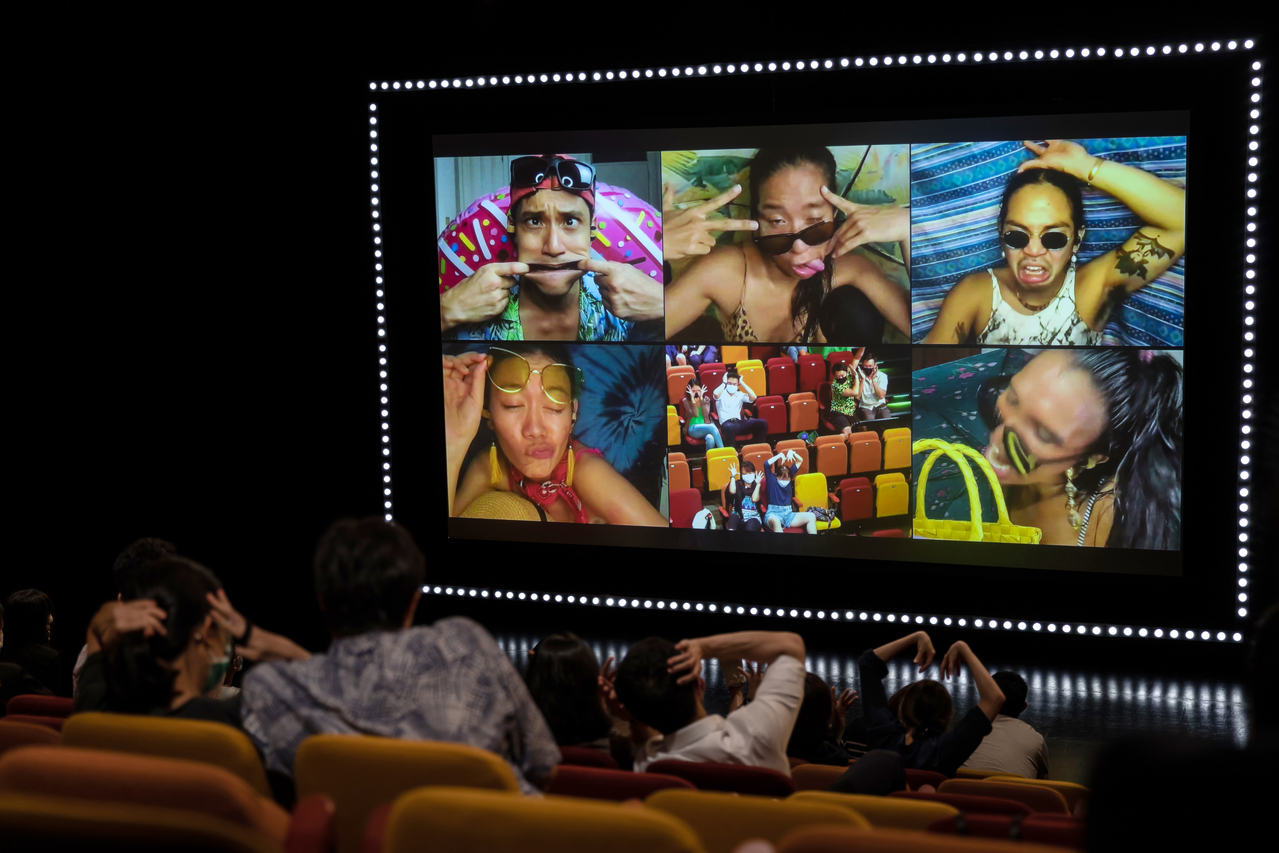Dance review: Manila Zoo turns Zoom's difficult gaze on its audience
Sign up now: Get ST's newsletters delivered to your inbox

Manila Zoo, by Eisa Jocson, at the Esplanade's da:ns festival.
PHOTO: BERNIE NG
Melissa Quek
Follow topic:
Manila Zoo
Eisa Jocson
da:ns festival
Esplanade Theatre Studio, Saturday (October 9), 8.30pm
da:ns festival
Esplanade Theatre Studio, Saturday (October 9), 8.30pm
Is Manila Zoo the answer to what dance will be in the future? A gloomy proposition, when I consider the fact that I had to drag myself to the Esplanade Theatre Studio in person to watch dancers performing on a large screen over Zoom.
Manila Zoo is the third part of the Happy Land series conceived by Filipino choreographer Eisa Jocson as a response to what she views as the conditioning and co-opting of the Filipino body as labour for amusement parks.
These reflections were inspired by the hiring of many senior Filipino performers for the parades and shows of Hong Kong Disneyland when it opened in 2006.
I was highly entertained and affected when I watched Princess, the first in the series, at the Esplanade for the 2019 edition of da:ns festival.
Jocson and fellow performer Russ Ligtas, dressed as Disney's iconic Snow White, re-enacted scenes from the animated movie.
Their shifting between the unflaggingly gentle princess and their own tired, suppressed selves confronted the facade of happiness that Disney and the amusement park culture maintain through their performers' labour.
Where Princess began with the pristine image of a delicate Disney Princess, Manila Zoo starts by highlighting the labour that goes into preparing for performance.
On a large screen in the middle of the stage, the performers in their individual Zoom frames go through a gruelling fitness regime.
Against the melodic hum of The Little Mermaid's soundtrack, soothing voices whisper "always there for you and me", "yes, at your service" and "have a great day". Beneath that, we hear grunts, bodies panting for breath and slick with sweat.
The dancers start to roam around their rooms on all fours, stretching and yawning, morphing from wolf to lion to fish. In their cages, they hiss, growl and grow wilder.
The energy reaches a climax and everyone is brought back to their senses, snapping back into human civility with a call for a water break.
The performers introduce a page for the audience to chat directly with them. Through their answers, I learn that the performance was originally planned in 2019 to be in person but had to adapt due to the various immigration and border control measures.
The performers still insist on the "live-ness" of the experience. A request from an audience member appears on the page: "Are you really live right now? If you are, everyone say 'cheese'." They oblige.
In addition to the communal audience experience, the strict control of theatre protocols affords some protection to the performers in this show, which is rated R18 for full frontal nudity and highly suggestive gestures.
This show is far more intimate and confrontational precisely because of Zoom, which highlights a sense of isolation and constriction while taking the audience into the personal spaces of the performers.
Another Zoom frame appears. In it is the auditorium, reflecting the audience inside back at themselves. We are encouraged to create the sounds of the zoo, whether whining with mouths closed or stomping our feet.
We try this a few times, getting bolder with each attempt. But now we are given scenarios to consider as the performers mime shooting themselves in the head. What if you were Filipino? What if your president…? What if…? As the last question dies away, they respond with animalistic cries of rage that morph into mirthless laughter and devolve into sobs.
Towards the end of the performance, as the dancers twerk, hump the floor and seduce the camera, all the levity has disappeared. The camera turns onto each person in the audience, magnifying our gazes and multiplying our images.
I feel the accusation of the camera eye and do not know where to look. I am aware of my complicity in making them perform for my entertainment. But what is the audience to do with the sense of guilt that has been built up?
The roles are reversed, the performers now still, watching the audience sitting in their seats. I have the urge to wave my arms and start dancing as an offering of my own labour to assuage my sense of guilt. I remain still.
I remember how earlier in the work, artistic director Jocson is speciously and cheekily introduced as part of the genus "overseas arts worker in search of first-world funding".
I try to find comfort in the mutual utilitarianism of the performer-audience relationship - as much as the performers are toiling for my enjoyment, they require my presence for the performance economy to exist. We are both caught in the cycle of capitalist systems of control.
Given the specificity of the Zoom platform and the political climate that fuels the rage of the performers, Manila Zoo could very soon feel outdated.
But for the moment, it perfectly captures the sense of forced isolation, false connections, increase in consumerism and objectifying gaze of the viewer brought on by our Zoom-based existence.

